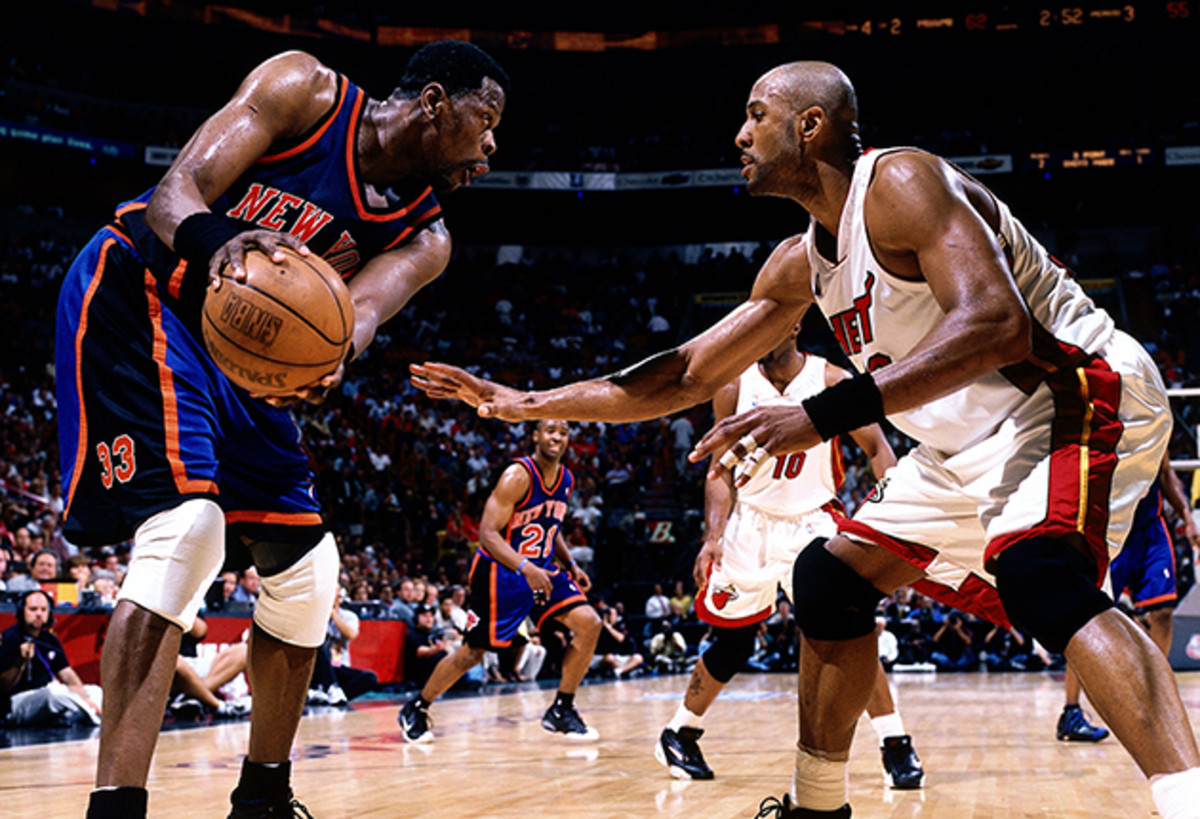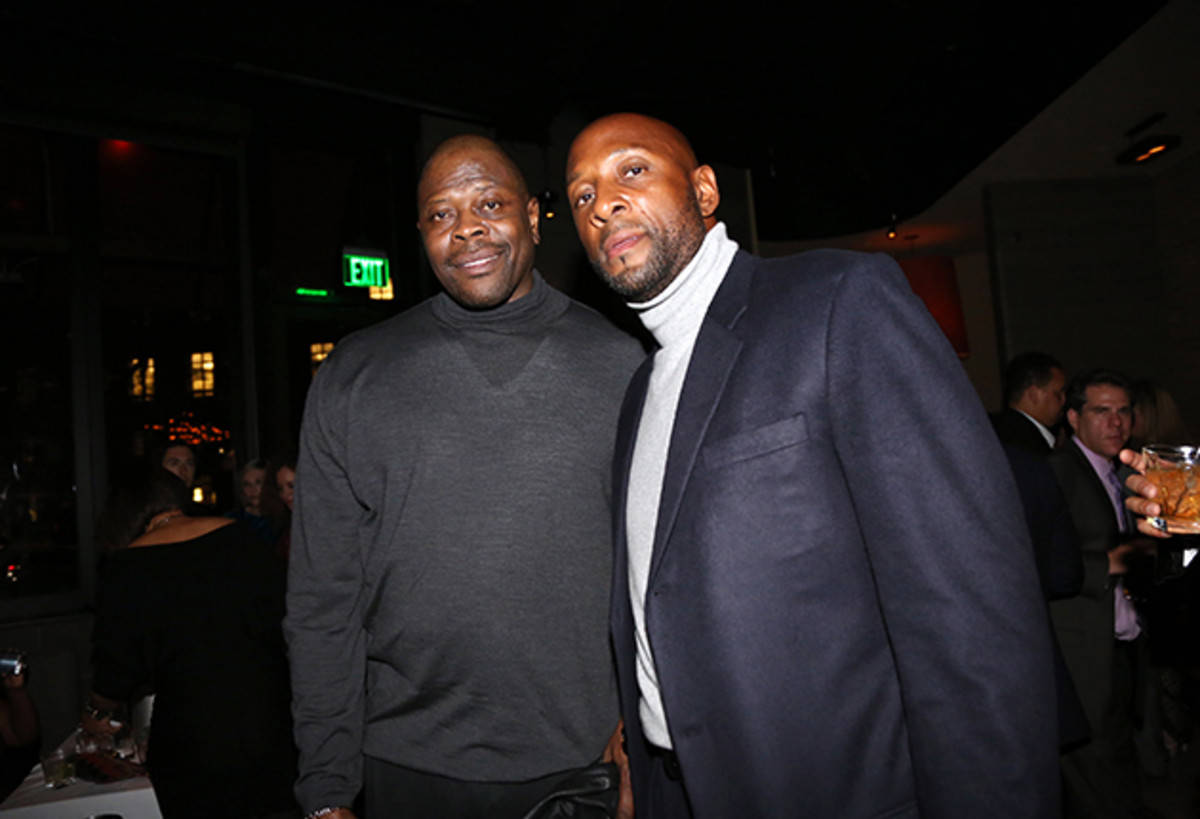SI Films presents: Patrick and Zo

The NBA playoffs have started and, for the second year in a row, the league’s dominant team will go long stretches with a “center” who shoots threes, leads fast breaks and is 6’5” ½ in his socks. That the Warriors not only excel with this small-ball lineup but are statistically at their best with it is a testament to Draymond Green, the midget center in question, as well as Golden State’s teamwork and personnel. It’s also a sign of the times. The East’s best team, the Cavs, occasionally go without a true pivot (and used LeBron James at the five for stretches during last year’s Finals). Big men in Sacramento, Minnesota, New Orleans and New York spent this season launching threes. Whereas stretch fours were once all the rage, now they’re almost a necessity. The new NBA fever dream is a stretch five.
Roundtable: Does Warriors' 73 wins matter without an NBA title?
By now, fans are accustomed to this new normal—everyone chucking like a bunch of towering Steph Curries. But to watch “Patrick and Zo,” a new documentary from SI Films, is to recall a vastly different NBA landscape of not so long ago, one ruled by brute force and patrolled by glowering, paint-protecting giants. “I need a bull, not a butterfly,” was Georgetown coach John Thompson’s directive first to Ewing and then, three years later, to Mourning. Thompson encouraged the two centers to play angry, and forbid them from taking jumpshots. In the 1982 title game loss to North Carolina, Thompson even told Ewing to employ an unusual defensive strategy. “Everything that came to the basket, go after it, and don’t be concerned if it’s goaltending or not,” remembers Thompson in the film. As he explains: “What’s the difference whether he puts an impression on somebody’s mind that I can get it as opposed to them going in and making a layup?” Following orders, Ewing goaltended five shots; looking back he claims, somewhat dubiously, that only two should have been called.
Three years later, when Ewing entered the NBA, his peers at center included lumbering giants like Alton Lister, Mel Turpin and Jon Koncak. Mark Eaton of the Jazz sometimes stayed back on D while Utah ran its half court offense. Only in Golden State—of course—was there a hint of the future where, within a few years, coach Don Nelson had Manute Bol, his 7’7”, shot-blocking stick figure, chucking up three-pointers. It’s fair to say it was more novelty than trend; Bol finished a 22% career shooter from deep.
Listen below and subscribe to our podcast on iTunes and SoundCloud.
The league’s physicality peaked during Ewing’s prime, which began with the arrival of Pat Riley in New York, in 1991. Under Riles, the Knicks became the new Detroit, a nasty, physical— many would say dirty—team. When, four years later, Riley fled New York for Miami and created the Knicks South, down to the same play calls, a brutal rivalry was born.
Enter Zo. Mourning had attended Georgetown in large part because of Ewing, who helped recruit him. When Mourning graduated, the two faced off in epic summer one-on-one matchups at Georgetown—“I still feel some of the elbows,” jokes Ewing—and became close. Now, pitted against each other on Eastern Conference powers, the pair were cast as mirror images in mirror offenses. Wrestle, protect, bang, fight.
• MORE NBA: How the Warriors could lose | Superstars on wrong teams

To watch footage today is to recall a strikingly different era, before “Malice in the Palace” and David Stern’s attempts to make the game faster, freer and tamer. When fights broke out during the Knicks-Heat games, you could actually hear the crowd cheering. And what antagonists the players were: a glowering Oakley beaning P.J. Brown with the ball during warm-ups, telling him to “get the f--- off the court”. Zo seemingly forever in mid-flex, teeth permanently clenched. The New York tabloids reveling in what Riley calls the “pure theater” of it all. Who can forget the image of Jeff Van Gundy attached to Zo’s leg, looking in Ewing’s words like, “a little rag doll” (Today, Mourning is certain the Heat would have prevailed in that series had he not been suspended for his fight with Larry Johnson).
For all the drama and intensity of the rivalry, Ewing and Mourning managed to remain close friends. And, despite their dominance, neither won a title, at least not in their respective primes. Ewing retired in 2002, ring-less. Mourning underwent a kidney transplant in 2003 (Ewing offered to donate a kidney, and was a match, but says he was ruled out on account of high blood pressure). Only in the twilight of his career, back with Miami in 2006, did Mourning get his title, playing on a Heat team led by Shaquille O’Neal and Dwyane Wade. And when Mourning retired three years later, in many respects so did an ethos.
These days, Ewing is an associate head coach with the Charlotte Hornets, hopeful that he may finally get a ring from the bench. Mourning lives in Florida with this wife and three children, and is active in charity work. The two watch as a new breed of big men inhabits the league. Gone are the enforcers, for the most part. Lumbering giants are rare—ironically, the Warriors boast perhaps the most old-school of them, in Andrew Bogut. The Knicks’ new center, Kristaps Porzingis, is the embodiment of everything those New York teams weren’t; a skilled, off-the-dribble big who relies on finesse and also happens to be three inches taller than Ewing. A Latvian butterfly, basically. Most striking, in a league dominated by guards and wings, centers have become primarily supporting players—a land of Mozgovs and Biyombos. It’s hard to imagine the league’s best rivalry existing between two post-up players (though Karl Anthony-Towns and Porzingis offer hope).
• MORE NBA: Playoff predictions | Most interesting postseason players

Despite their battles—and in part because of them—Ewing and Mourning remain good friends. In shooting the film, the crew interviewed Mourning and Ewing separately, then together in Miami. The camaraderie was evident. “I would describe the vibe as playful brothers ... with Patrick serving as the willing target and grizzled older brother,” says Jon Weinbach, the director. “Alonzo is noticeably more playful around Patrick than he is solo, and his voice gets a little higher and he speaks faster and his tone almost takes on a different, radio DJ-like, rat-a-tat quality when he's bullsh------ with Patrick.” In particular, Mourning loves making fun of Ewing's Jamaican accent, which is still quite noticeable at times.
Watching the two men reliving their glory days—Zo still fit and impeccably dressed, Ewing noticeably thicker and a bit rumpled—is to see two old warriors from a bygone era, softened by the passage of time. At one point, the two men are looking through old photos and Mourning seizes on one of Thompson and Ewing with the President. “Any time you’re in a picture with Ronald Reagan, you got to be old,” Mourning says, cackling. And then, in a comment about his old friend that could just as easily describe their antiquated approach to the game, Mourning adds: “You look like a dinosaur.”
Perhaps, but those dinosaurs sure were fun to watch.
